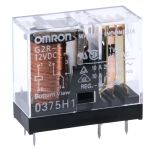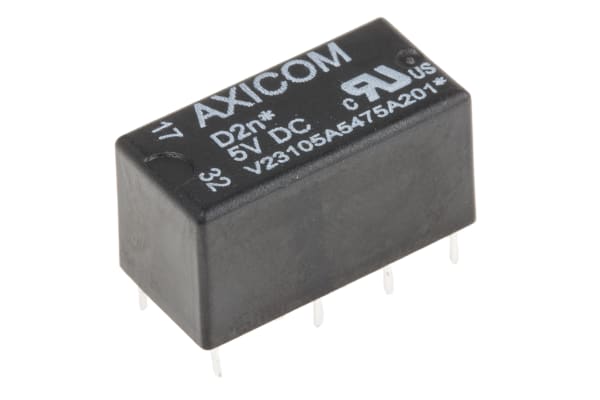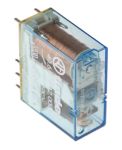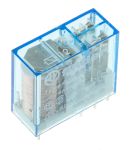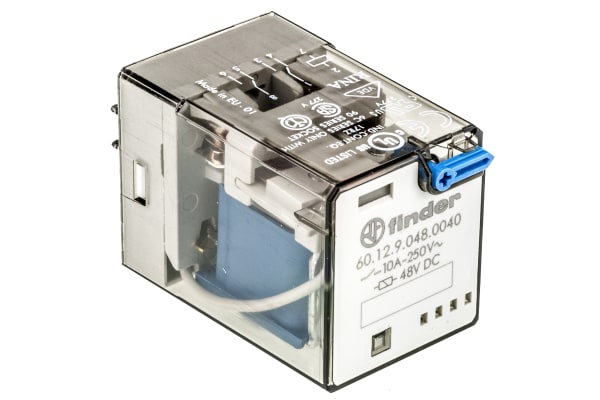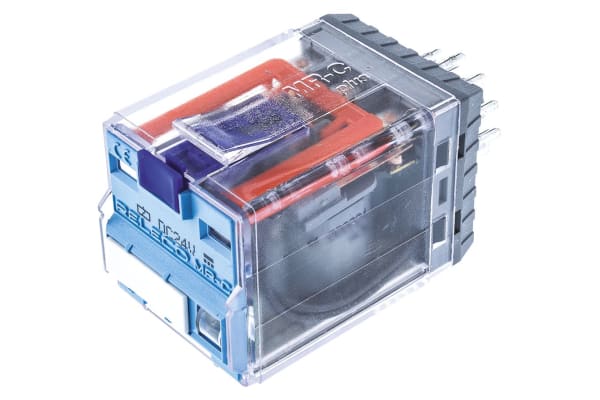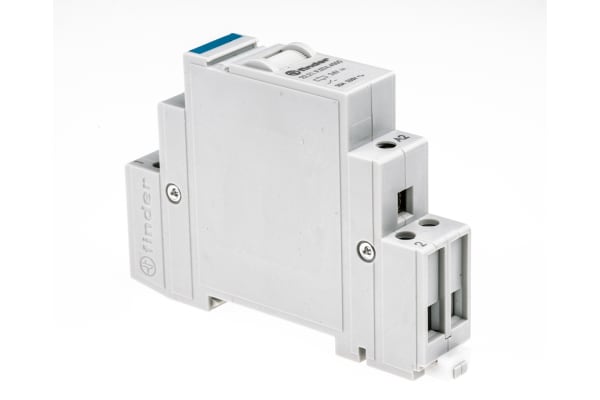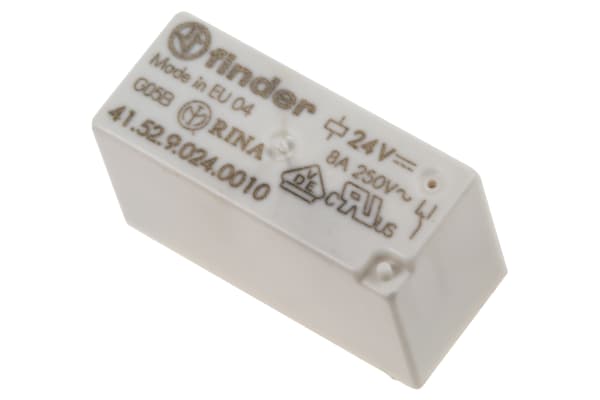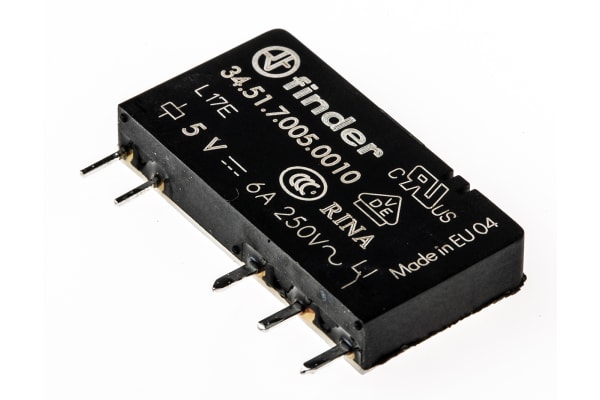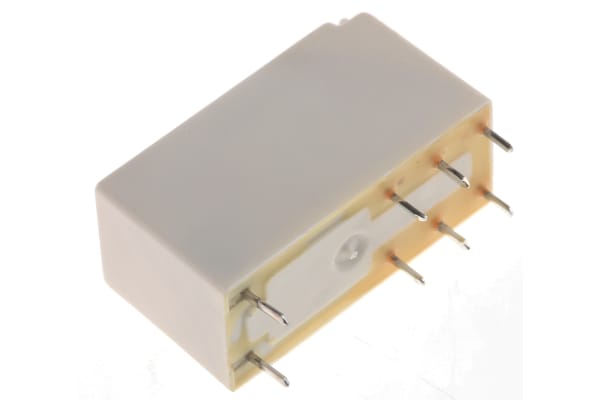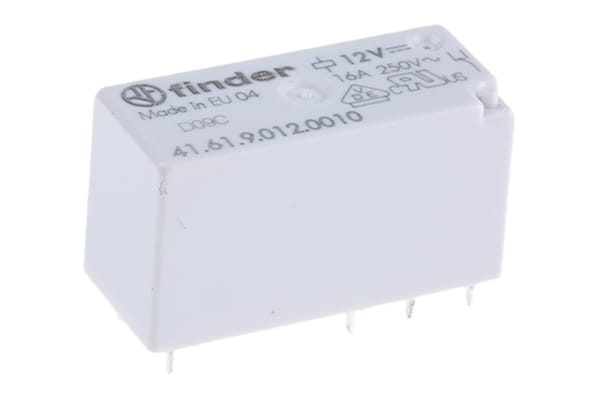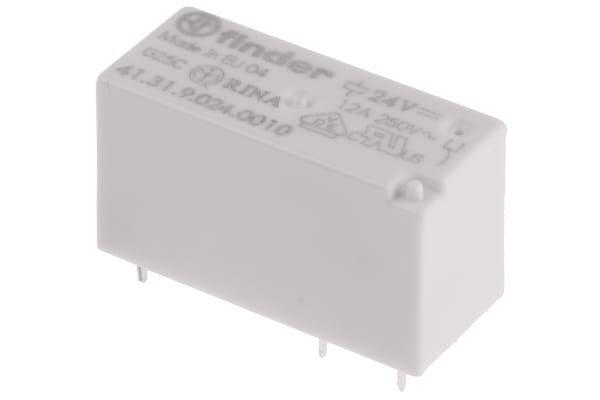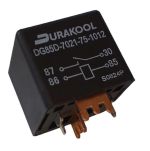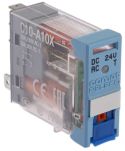Non-Latching Relays
Relays are electrical switches that are operated by electrical impulses with the primary function to open and close a circuit, they can also be referred to as industrial switches. There are 2 main types available, latching and non–latching relays.How do non-latching relays work?Non-latching relays are in a normally closed (NC) position and will stay in this state without power. When power passes through the circuit, the relay switched to a normally open (NO) position by using an internal coil to generate a magnetic force, holding this NO position. Once the current is turned off, it returns to the NC position. This makes non-latching relays well suited to push-button applications like keyboards and micro-controller input buttons.What are non-latching relays used for?Non-latching relays are highly durable and versatile components, making their performance long lasting and suitable for use in a wide range of applications, such as:Automotive enginesHousehold appliancesIndustrial machineryMedical equipmentTelecommunications equipmentWhat is the difference between latching and non-latching relays?Both types of relays in similar in design and function, however, a significant difference between them is that a latching relay will remain in the last position it when it was last powered, whereas a non-latching goes back to its normal position. This makes each more type of relay suitable for different applications. Considerations when selecting a relayWhen choosing a relay, it is important to consider a number of specifications to ensure it is fit for purpose, some factors include:Coil voltage – the required voltage to actuate the switching mechanism. If a voltage is too high this could damage the components, if it is too low then it will not actuate. Contact configuration – This is the state the contacts are in without power. For example SPST, single pole single throw.Contact material – the relay contacts are available in many materials that have certain properties. Common materials are gold, silver, tin oxide and nickel Coil power – the amount of power (watts) the coil operates at. This must match the power in the circuit for correct function. Coil resistance – the amount of resistance (ohms) in the circuit that the coil creates.
-
Omron, 12V dc Coil Non-Latching Relay SPDT, 10A Switching Current PCB Mount Single Pole, G2R-1 12DC
IDR67,024.71 -
Omron, 5V dc Coil Non-Latching Relay SPDT, 10A Switching Current PCB Mount Single Pole, G2R-1 5DC
IDR68,702.95 -
Releco, 230V ac Coil Non-Latching Relay 3PDT Plug In, 3 Pole, C3-A30X-230VAC
IDR409,700.34 -
TE Connectivity, 5V dc Coil Non-Latching Relay DPDT, 3A Switching Current PCB Mount, 2 Pole, V23105A5475A201
IDR60,626.42 -
Finder, 12V dc Coil Non-Latching Relay SPDT, 16A Switching Current PCB Mount Single Pole, 40.61.7.012.0000
IDR93,981.44 -
Finder, 12V dc Coil Non-Latching Relay SPDT, 10A Switching Current PCB Mount Single Pole, 40.31.7.012.0000
IDR66,185.59 -
Finder, 12V dc Coil Non-Latching Relay DPDT, 8A Switching Current PCB Mount, 2 Pole, 40.52.7.012.0000
IDR94,610.78 -
Finder, 48V dc Coil Non-Latching Relay DPDT, 10A Switching Current Plug In, 2 Pole, 60.12.9.048.0040
IDR346,556.56 -
Releco, 115V ac Coil Non-Latching Relay 3PDT, 10A Switching Current Plug In, 3 Pole, C3-A30X / AC 115 V
IDR384,736.52 -
Releco, 24V dc Coil Non-Latching Relay 3PDT, 10A Switching Current Plug In, 3 Pole, C3-A30X / DC 24 V
IDR414,315.50 -
Omron, 240V ac Coil Non-Latching Relay DPNO, 25A Switching Current Panel Mount, 2 Pole, G7L-2A-T 200/240AC
IDR257,504.95 -
Omron, 12V dc Coil Non-Latching Relay DPNO, 25A Switching Current Panel Mount, 2 Pole, G7L-2A-T 12DC
IDR196,039.41 -
Finder, 24V dc Coil Non-Latching Relay SPNO, 20A Switching Current DIN Rail Single Pole, 22.21.9.024.4000
IDR487,109.16 -
Finder, 24V dc Coil Non-Latching Relay DPDT, 8A Switching Current PCB Mount, 2 Pole, 41.52.9.024.0010
IDR79,926.18 -
Finder, 5V dc Coil Non-Latching Relay SPDT, 6A Switching Current PCB Mount Single Pole, 34.51.7.005.0010
IDR132,161.40 -
Finder, 24V dc Coil Non-Latching Relay SPDT, 16A Switching Current PCB Mount Single Pole, 41.61.9.024.0010
IDR117,791.47 -
Finder, 12V dc Coil Non-Latching Relay SPDT, 16A Switching Current PCB Mount Single Pole, 41.61.9.012.0010
IDR114,854.55 -
Finder, 24V dc Coil Non-Latching Relay SPDT, 12A Switching Current PCB Mount Single Pole, 41.31.9.024.0010
IDR125,658.22 -
Omron, 24V ac/dc Coil Non-Latching Relay SPDT, 6A Switching Current DIN Rail Single Pole, G2RV-SR501 AC/DC24
IDR419,035.55 -
Durakool, 12V dc Coil Non-Latching Relay SPNO PCB Mount Single Pole, DG85D-7021-75-1012
IDR58,109.06 -
Releco, 24V dc Coil Non-Latching Relay SPDT, 10A Switching Current Plug In Single Pole, C10-A10X / DC 24 V
IDR208,101.76 -
Omron, 24V dc Coil Non-Latching Relay SPDT, 16A Switching Current PCB Mount Single Pole, G2R-1-E 24DC
IDR87,583.15 -
Omron, 24V dc Coil Non-Latching Relay DPDT, 2A Switching Current PCB Mount, 2 Pole, G5V-2 24DC
IDR72,688.77 -
Finder, 24V dc Coil Non-Latching Relay DPDT, 8A Switching Current PCB Mount, 2 Pole, 40.52.9.024.0000
IDR156,076.32



